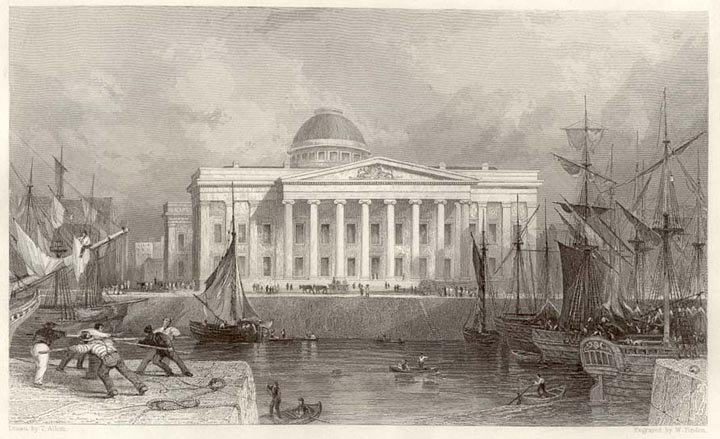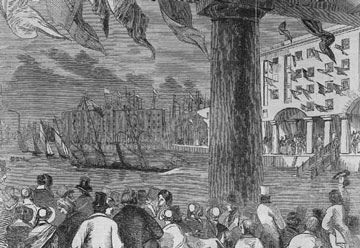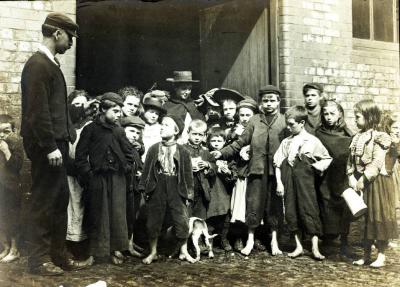THE NEED FOR MUNICIPAL BURIAL GROUNDS AND THE INCEPTION OF TOXTETH PARK CEMETERY
THE INCEPTION OF TOXTETH PARK CEMETERY GROUNDS AND THE INCEPTION OF TOXTETH PARK CEMETERY
The “Burial Board” of Toxteth Park initially purchased thirty acres of land, from The Earl of Sefton, at a cost of around £15.000, approximately £850.000 in todays money . William Gay of Bradford was charged with the design, and Thomas Denville Barry the architecture, they were leading cemetery designers of their day. A further ten acres of land was purchased a couple of years later, as Liverpool’s population was still expanding.
”The Northern Daily Times, dated Tuesday July 6th 1855” reported “The foundation stone for the church and chapel of Toxteth Park General Cemetery was laid at 3 o’clock on July 5th 1855, for the “performance of the burial service according to the rites of the Established church and other religious denominations”. The article also stated that, “A very large number of persons attended the ceremony” and the chairman of “The Burial Board” Mr Gregson, was “presented with a silver trowel, who then buried a bottle containing journals of the day and ground plans in a place provided and covered with a plate”.
The opening ceremony was performed by the then Lord Bishop of Chester, and the first interment took place, that of an Elizabeth Watling on 17th June 1856.
TOXTETH PARK CEMETERY lies on the A562 Smithdown Road a very busy road in Liverpool. Although the Council are now laying flat headstones that they deem to be ‘unsafe’ due to the dreaded ‘Health & Safety’ (which I think is legalised vandalism) it is still quiet, peaceful and quite well maintained. Although it has its problems like all urban cemeteries, it is still used for interments today.
ABOUT LIVERPOOL
Liverpool had the world’s first commercial enclosed wet dock which was completed in 1715, and by the 1840’s its docks were expanding fast, culminating with the completion of The Albert Dock designed by Jesse Hartley.
On Thursday, July 30th 1846 amidst much pomp and splendour The Albert Dock was officially opened by Prince Albert. The docks gave employment to thousands of men, and by the mid 1840’s, ships were taking emigrants to the the New World. The Irish famine of 1845 saw an influx into Liverpool and surrounding areas on a scale never before seen. Although there was prosperity for some, a majority of people lived in abject poverty and squalor, and it was not unusual for up to five, six or more families living in a one bedroomed house.
The death rate, especially amongst infants and children were appalling, and as a consequence Local Churchyards were becoming seriously overcrowded. Liverpool Town Council, (Liverpool was not a city until 1888) needed to act to find alternative arrangements for the burial of the local populace.Then in the 1850’s the gradual closure of overcrowded local churchyards, created an urgent need for more space. Cremations were illegal in Britain until 1885 so the opening of new “Out of Town” municipal cemeteries were planned under “The Burial Act of 1857”.
Initially to alleviate the overcrowding, three privately run cemeteries were opened, these were:-
PRIVATE CEMETERIES
- The Necropolis, 1825
- St James’ 1829
- St Mary’s Cemetery,
Kirkdale 1837
MUNICIPAL CEMETERIES
- TOXTETH PARK CEMETERY opened in 1856,
- Allerton Cemetery opened in 1909,
- Anfield Cemetery opened in 1863, (cremations from 1896),
- Everton Cemetery opened in 1880,
- Kirkdale Cemetery opened in 1881,
- Rice Lane, Walton was opened Also in 1856
- West Derby Cemetery opened in 1884,
ROMAN CATHOLIC CEMETERIES
- Ford Cemetery in 1859
(indexes are available at Liverpool Library), - Ainsdale Cemetery opened in 1884,
- West Derby Cemetery opened in 1893,



